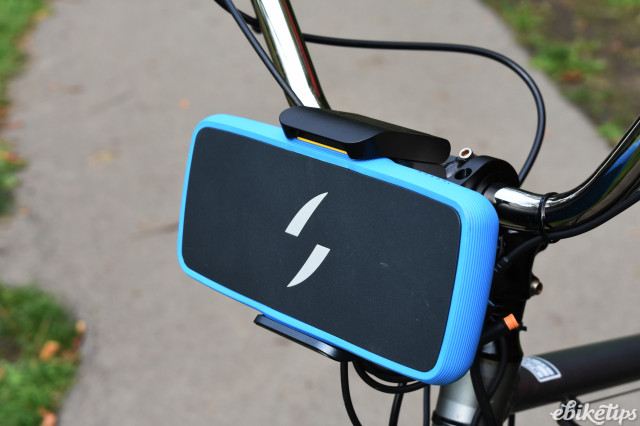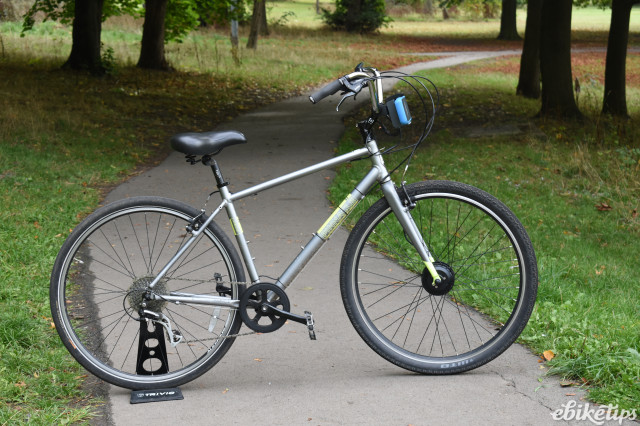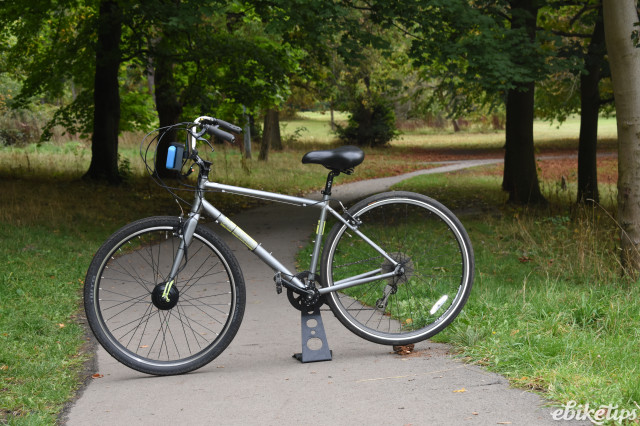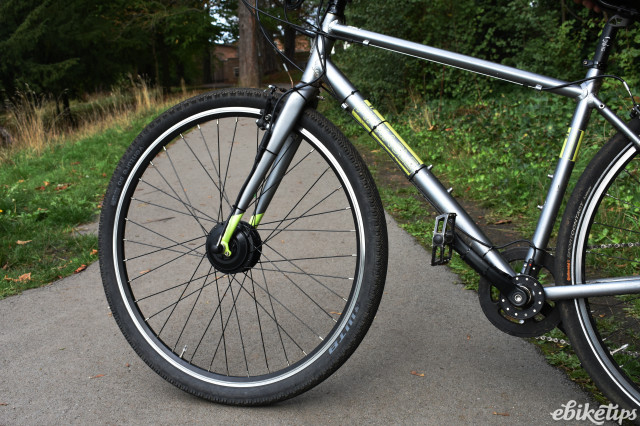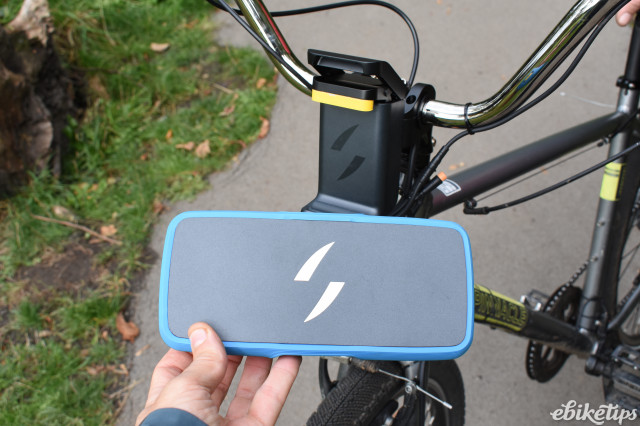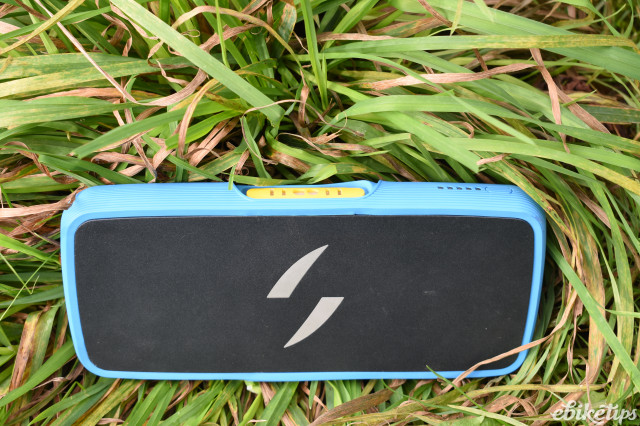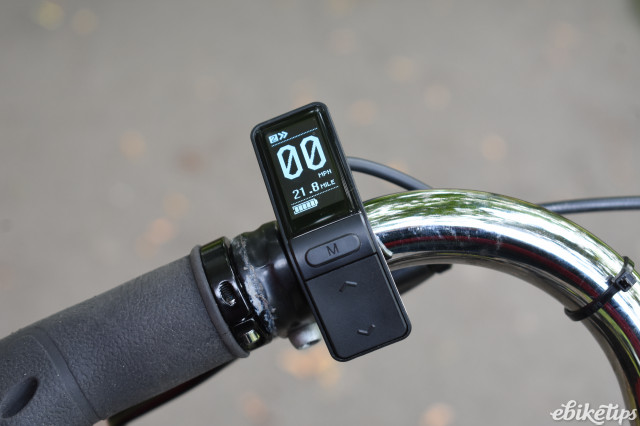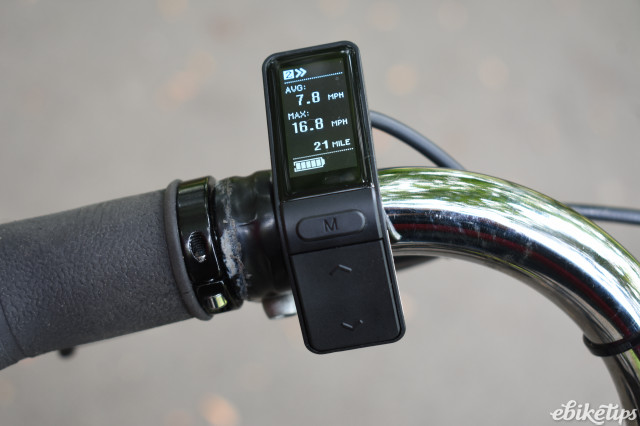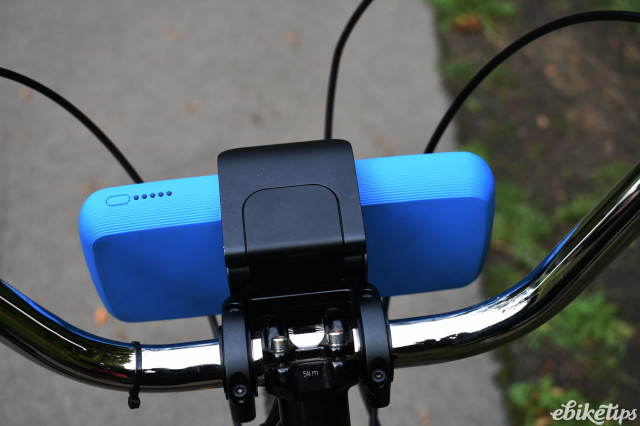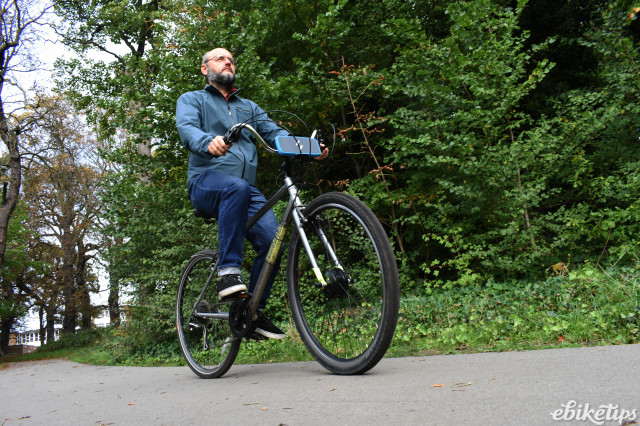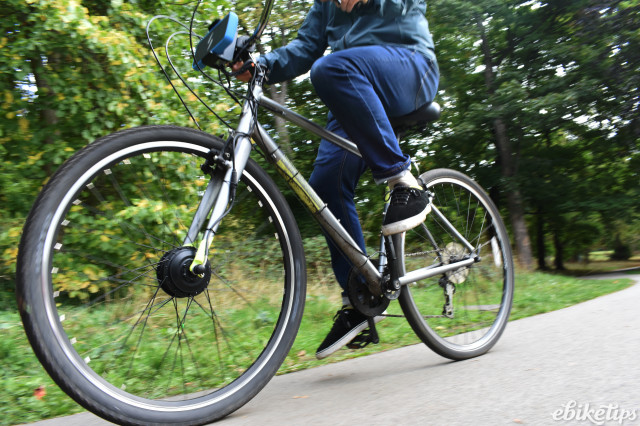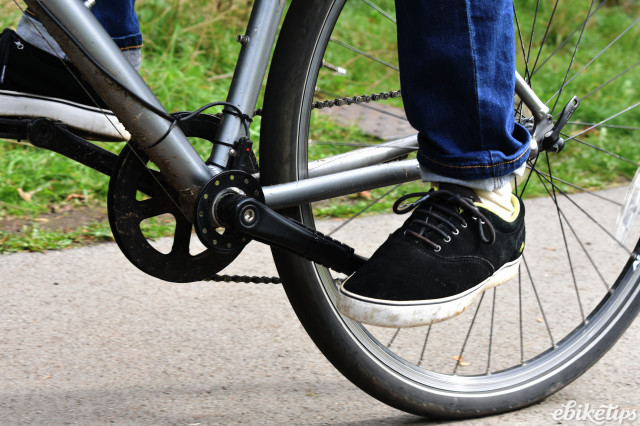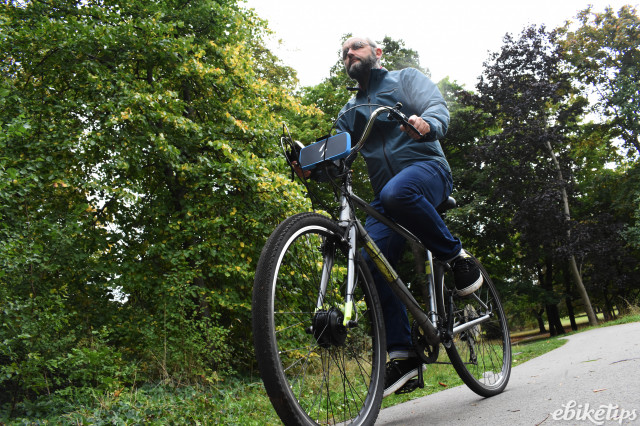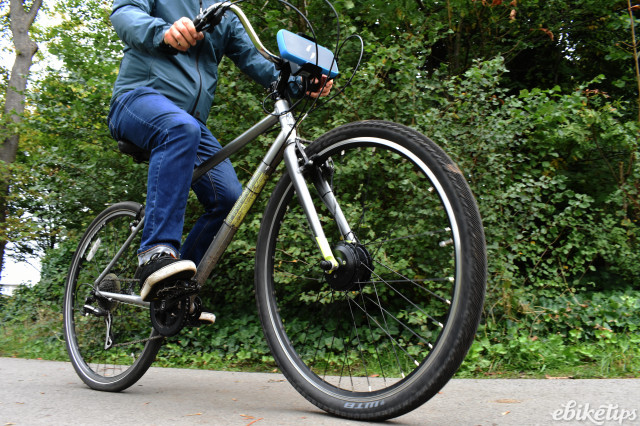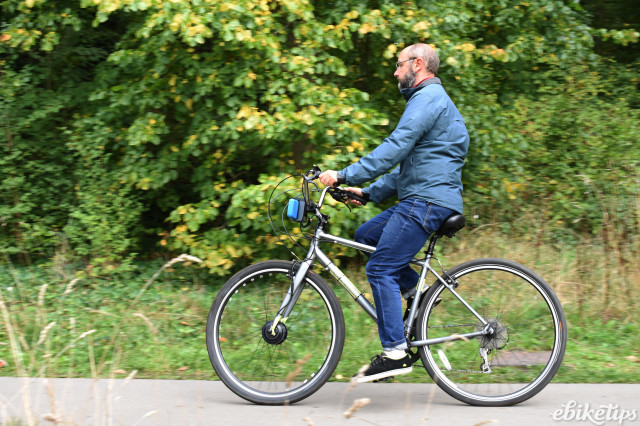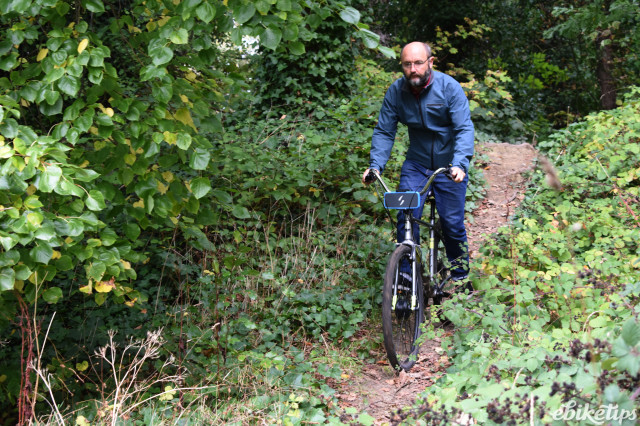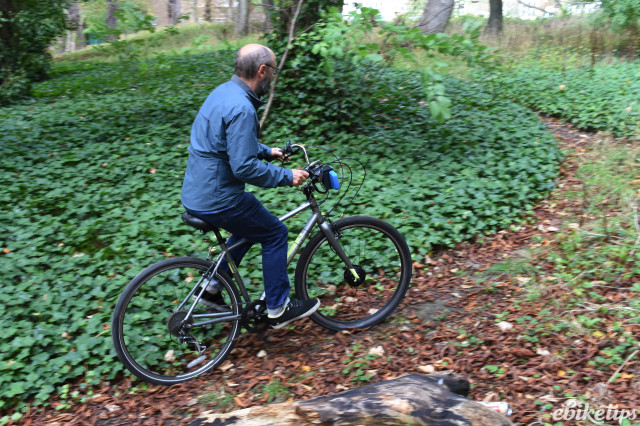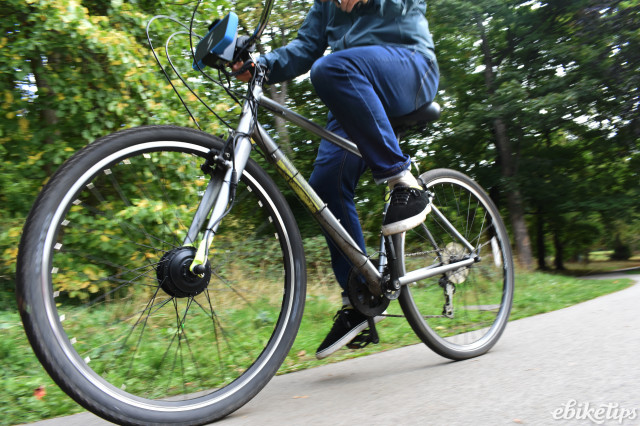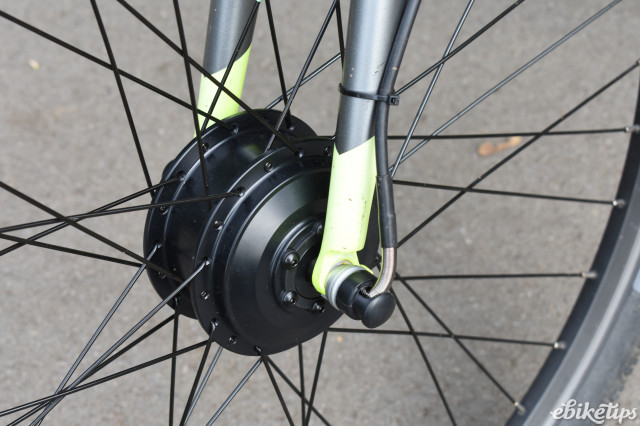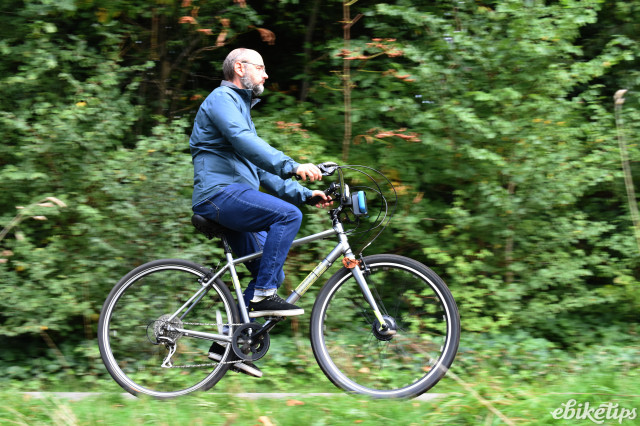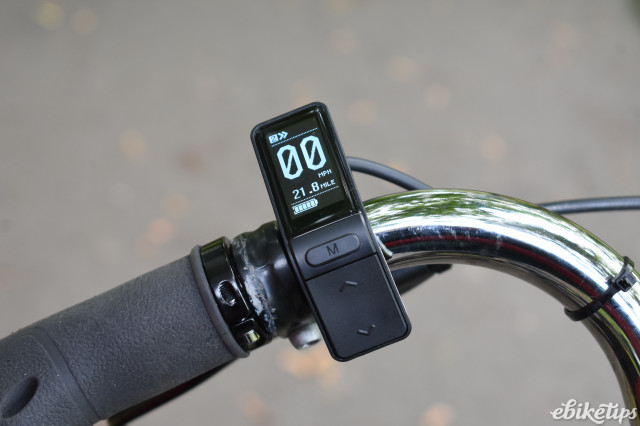Swytch e-bike conversion kit 2022
Overview
- Good value if you can wait
- Easy to fit
- Lightweight and smooth power
- Lead time to get the best price
- Small capacity batteries
Swytch have featured regularly on ebiketips over the last few years, both for raising several millions of pounds investment, zappy marketing and not least for the positive reviews of their e-bike conversion kits here and here. Now comes the latest version with a slimmed down battery that will fit in a big pocket or small bag and a new 'clamp' mounting system to go with it. Just as notable though is the new and lower price.
The latest version of the Swytch system costs £449 if you are prepared to wait six months for it and £549 if you only want a three month wait. £999 is the full RRP but we are assuming virtually no-one wants to pay the extra for the sake of not waiting...
In 2020 the kit was £500 at the discounted price so, even though you are getting a smaller battery than the previous iteration, it's still one of the most competitively priced e-conversion kits out there on the market. Swytch will likely have done their market research and realised that most riders will accept less range as an acceptable trade-off for a more portable battery and less weight on the handlebars when weight on bike handlebars is not, in principle, good for handling. More range can be achieved with an extra and easily portable battery of course. With the most likely market at this price being at the casual 'get around town' end of the market, it seems a clever move.
Ever smaller and a lot funkier
Many elements of the Swytch conversion kit are the same as before, namely the sprightly little front hub motor and the pedal sensor that means the motor kicks in when you start pedalling.
What's new is the much lighter (though smaller capacity) battery. The smallest battery option, the Air, is now reduced in size by 70% and weight by 50% compared to its predecessor, with the quickly removable battery now fitting in the palm of your hand. The Air has a claimed weight of 700g and measures little more than 20x10x2.5cm. There is also a Max version of the battery which is only 1.4cm longer but twice as thick. We tested the 98Wh Air version - the Max version is 198Wh.
The new battery has a protective rubberised cover and is highly portable but perhaps more impressive is the new mounting system which is a lightweight alloy clamp mechanism which locks the battery firmly in place. Underneath are leads that connect to the motor and the pedal sensor, with further connections for an optional throttle and for brake cut-out sensors, (neither of which we tested). It looks mechanically more secure and the alloy construction just feels higher quality than the previous version which was made of tough feeling plastic.
In short, less weight and higher quality.
Fitting
Fitting is pretty much the same as the previous kit with three steps:
- Swap out front wheel
- Fit cadence sensor
- Fit battery pack to handlebars
Most important is to specify the width of your front forks at the dropouts and the width of the dropouts themselves (9mm or 10mm). My own recipient bike was a lightweight Pinnacle (Evans own brand) hybrid with 100mm between the front fork arms and 9mm wide axle dropouts - fairly typical for a modern bike.
Fitting was all pretty straightforward and took around 35 minutes. The fiddliest part was getting the pedal sensor and magnet ring aligned correctly but it was possible to make fairly precise adjustments due to the double articulation on the magnet ring arm. They key is to get the two parallel with the magnets as close as possible to the sensor without touching it. For your first ride or two you might want to take the correct size allen key with you and some spare cable ties in case the magnet disc and ring needs some fine tuning. It only needs one of the magnets in the ring to be a bit out of position for the power delivery to feel slightly haphazard.
It was fitted to a Pinnacle hybrid with V-brakes - a decent quality bike from back in the days when V-brakes were the standard quality offering and discs more premium bike territory. The 'naked' weight before fitting was 12.1kg. After fitting it was 15.4kg, a net gain of 3.3kg, making it one of the lightest e-bike conversion kits out there - albeit that that is partly achieved by using such a small battery.
Swytch put through its paces
First impressions are extremely positive; the power comes in smoothly and matches your pedal strokes pretty well. There is hardly any waiting for the power to arrive after starting pedalling and no 'run on' to speak of once you have stopped pedalling. If feels fast (indeed somewhat faster than the speed showing on the optional 'extra' handlebar display which we fitted) and power delivery is smooth and pretty quiet.
With only a 98Wh battery on board we were curious to see if the range would be practicable in everyday situations. After achieving nearly 12 miles on a rolling bikepacking route with around 1,250ft of climbing we felt we needn't have worried. No doubt the lightweight Pinnacle donor bike with a pretty wide spread of eight derailleur gears helped pedalling efficiency, but power consumption figures of around 8.4Wh per mile are good by any standard (just for comparison, another lightweight economical e-conversion kit, the LaVita Boost achieved figures in the same region when fitted to the same donor bike).
The power tailed off when the battery icon on the handlebar display started flashing (even though two lights still appeared on the battery itself). The net result was that it was hard to predict when the power would run out, a fact compounded by the way the battery bars on the icon moved up and down depending on how it was being worked by the motor.
The 2m42s posted on our standard test course of almost a mile of constant climb was right up there with the best and shows it maintained the top assisted speed of around 16mph all the way up, with no drop off. The test rider didn't feel at all out of breath either. Strangely, this was considerably faster than the previous kit, though that was fitted to a much heavier bike and there was a bit more headwind, which perhaps explains the discrepancy. The motor struggled more than some on our ultra steep test but that's par for the course with small hub motors.
We requested the optional LED display / thumb control (£39) which simply plugs into one of the leads on the underneath of the handlebar mount. This easily solves one of the inconveniences of the previous system which featured power buttons on the top of the centrally located battery pack, meaning you had to remove a hand to change assistance level. Swytch say that if used without the display / thumb control then the system automatically sets the power level for you. We stuck with the display as it allowed easy changing as desired and meant you could turn the power off easily, saving battery which is all the more precious with smaller capacity. The display itself is very clear and visible and worked very well in allowing immediate control of your power levels.
Conclusion
It's surprising that for an area that generates as much interest as retrofit kits that there aren't more on the market. In the UK, there is Cytronex and LaVita Boost who, like Swytch are homegrown. There's also Dillinger (originally Australian) who - like many others - offer a Bafang front hub motor and large frame mounted battery and who have a decent reputation for service and value. There are others, but most are north of £1,000 and so not really direct competitors for the likes of Swytch. We've done a round-up of the best e-bike conversion kits if you want to take a look at a few of the other options.
Cytronex is more expensive than Swytch (from £1,045) but undoubtedly the best made and classiest sytem. The LaVita Boost has the best sensing system of all but lacks the 'oomph' of Swytch. Until there is a step change in design, with developments such as reliable and cost effective wireless motor control, then Swytch is about as effective a performer and as good value as you can get with today's generic technology. If you don't mind the small capacity battery and the wait there are no real downsides and a lot of pluses.
